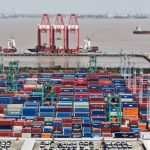
Eurasia Over Europe: Towards a Strategic, Open, and Resilient Continental Vision
By Rajeev Ahmed
The Idea of ‘Eurasia’ Is More Viable Than ‘Europe’
In the shifting tectonics of 21st-century geopolitics, the concept of Eurasia is emerging as a more strategically viable and inclusive vision than the narrower, often insular construct of Europe. The latter, increasingly defined by the confines of the European Union and the transatlantic alliance system, has built itself around an ideology of exclusivity, institutional cohesion, and strategic separation from adversaries. Conversely, Eurasia—a geographical, civilisational, and economic continuum spanning from Lisbon to Vladivostok, and from Moscow to Mumbai and Beijing—offers a pluralistic, dynamic model of interconnectivity and multipolar cooperation.
But the road to building a coherent Eurasian strategy is neither linear nor free of obstacles. The persistent presence and influence of the West—especially the NATO bloc and transatlantic institutions—cannot be simply dismissed or ignored. The key challenge for Eurasia, therefore, lies in managing this presence: mitigating its risks, leveraging its residual benefits, and ensuring it does not fracture the fragile consensus among emerging continental powers.
The West Won’t Disappear – Eurasia Must Learn to Manage It
Total isolation from Western Europe and the broader West is neither desirable nor feasible for any Eurasian state. Despite the diplomatic rifts, ideological divergence, and systemic competition, the global economy remains interdependent. The European Union, with a GDP of over $18 trillion and the United States, with more than $26 trillion in economic output (IMF, 2024), continue to dominate in advanced technologies, financial systems, and trade architecture. Detaching Eurasia from these global systems would be not just impractical—it would be economically self-defeating.
The strategic imperative, therefore, is not isolationism, but managed interdependence. Eurasia must inoculate itself from the political volatility and coercive policies of the West without severing access to its capital, markets, and technology. This delicate balancing act resembles strategic hedging, long practiced by countries like Turkey, India, and ASEAN members, who engage with multiple centres of power while preserving autonomy.
Neither Fortress Nor Empire: Eurasia’s Third Path
Two historical models have shaped regional consolidation: the “fortress” (total external opposition) and the “empire” (unipolar hegemony). Post-WWII Western Europe fits the former, relying on US protection and exclusion of Soviet influence. The postwar United States itself exemplifies the latter, absorbing the cost of global leadership through military, institutional, and economic dominance. Neither applies to Greater Eurasia.
Firstly, no Eurasian power seeks full decoupling from the global economy. Russia, China, India, and Iran continue to trade with Europe, the Middle East, and Africa—albeit selectively and cautiously. Secondly, there is no Eurasian hegemon willing or able to assume the burdens of continental leadership. China’s Belt and Road Initiative (BRI), despite its scale, has always been transactional rather than imperial in spirit. Beijing’s cautious diplomacy and avoidance of security entanglements in Central Asia testify to its unwillingness to bear hegemonic costs. Russia, after the Ukraine war and under heavy sanctions, is in no position to enforce dominance, even if it wanted to. India, fiercely protective of its strategic autonomy, will not acquiesce to a China- or Russia-led bloc.
Thus, Eurasia is uniquely multipolar—not in rhetoric but in structure. This emerging order is being shaped not by dominance but by dialogue and equilibrium. The Shanghai Cooperation Organisation (SCO), the Eurasian Economic Union (EAEU), and BRICS+ reflect this ethos: cooperative frameworks built on mutual respect, flexible integration, and shared sovereignty.
Europe’s Fragile Exclusion Strategy
Some Western strategists see the EU as a self-sufficient “garden” surrounded by the “jungle” of global instability—a metaphor recently (and controversially) invoked by EU foreign policy chief Josep Borrell. This ideological self-image, however, fails under scrutiny. The EU’s internal cohesion relies heavily on continued openness to American security guarantees, Chinese capital flows, and global supply chains. Its attempts to exclude Russia or fence off the Global South have been partial and ineffectual.
Even in the case of Russia, the EU’s sanctions regime—one of the most expansive in history—has not achieved strategic isolation. Russian oil continues to reach global markets through intermediaries. Eurostat data indicates that Russia’s share of EU LNG imports rose from 16% in 2023 to 17.5% in 2024. Western efforts to construct legal-institutional barriers to Eurasia have created a brittle enclosure, vulnerable to economic shocks, internal dissent, and external reconfiguration.
Toward an Open, Resilient Eurasia
Could Eurasia construct a self-sufficient development community? In theory, yes. But success requires political convergence, long-term economic planning, and institutional innovation. Unlike postwar Europe, which had the US Marshall Plan, NATO, and the ECSC/EU to anchor its reconstruction, Eurasia lacks a singular institutional core. China’s BRI and Russia’s Greater Eurasian Partnership are complementary, but not unified. India’s Indo-Pacific vision does not seamlessly integrate with either.
Still, the pieces are converging. The expansion of BRICS and the increasing relevance of regional mechanisms like the SCO and the EAEU suggest a growing appetite for systemic alternatives. The Eurasian Development Bank, the Asian Infrastructure Investment Bank (AIIB), and the New Development Bank (NDB) offer early examples of Eurasian-led financial architecture. What remains lacking is a political doctrine—a shared narrative and strategic orientation to bind this diversity into a cohesive platform.
This is where resilience comes into play. Rather than mimic the EU model of legal-institutional uniformity, Eurasia must develop an adaptive, open-ended framework capable of absorbing external shocks—sanctions, trade disruptions, tech bans—without breaking internal cohesion. It must act pragmatically, not ideologically, and operate on the principle of strategic convergence rather than forced integration.
Strategic Patience, Not Isolation
Russia’s pivot to Asia, China’s cautious global rise, and India’s assertive diplomacy all signal a shared understanding: the West remains a factor, but not a destiny. Western sanctions, while disruptive, have failed to collapse Russia’s economy. On the contrary, Russia recorded a 3.6% GDP growth in 2023, driven by import substitution, redirected trade, and increased military-industrial activity (World Bank). China, facing decoupling pressures from the US, is intensifying its South-South diplomacy and global infrastructure investments. India, benefitting from Western tech transfers and Eastern trade links, plays both sides with strategic dexterity.
The Way Forward: Strategic Equilibrium
Eurasia must avoid both the illusion of self-isolation and the temptation of replication. Neither Fortress Europe nor Pax Americana offer viable templates. Instead, the future lies in strategic equilibrium—a continental order that balances openness with sovereignty, cooperation with autonomy, and engagement with resilience.
The ultimate goal is not to sever ties with the West but to render its coercive instruments ineffective. This demands subtle diplomacy, shared vision, and sustained coordination among Eurasian actors. It also requires the political maturity to navigate divergences without resorting to hegemonic ambition.
If the 20th century was the age of transatlantic dominance, the 21st may well be the era of transcontinental synthesis—a Eurasian century built not on exclusion or submission, but on pluralism, pragmatism, and strategic endurance.
This is not utopian idealism. It is a geopolitical necessity.
Rajeev Ahmed, Bangladeshi Journalist and The Editor of Geopolits.com






![Pakistan accuses the TTP of carrying out attacks on its territory and the Afghan Taliban government of harbouring the group [File: Fayaz Aziz/Reuters]](https://asiandiplomacy.com/wp-content/uploads/2025/10/2023-02-27T041341Z_1777986366_RC2O7Z9GI1FB_RTRMADP_3_PAKISTAN-BLAST-POLICE-1760256429-150x150.webp)